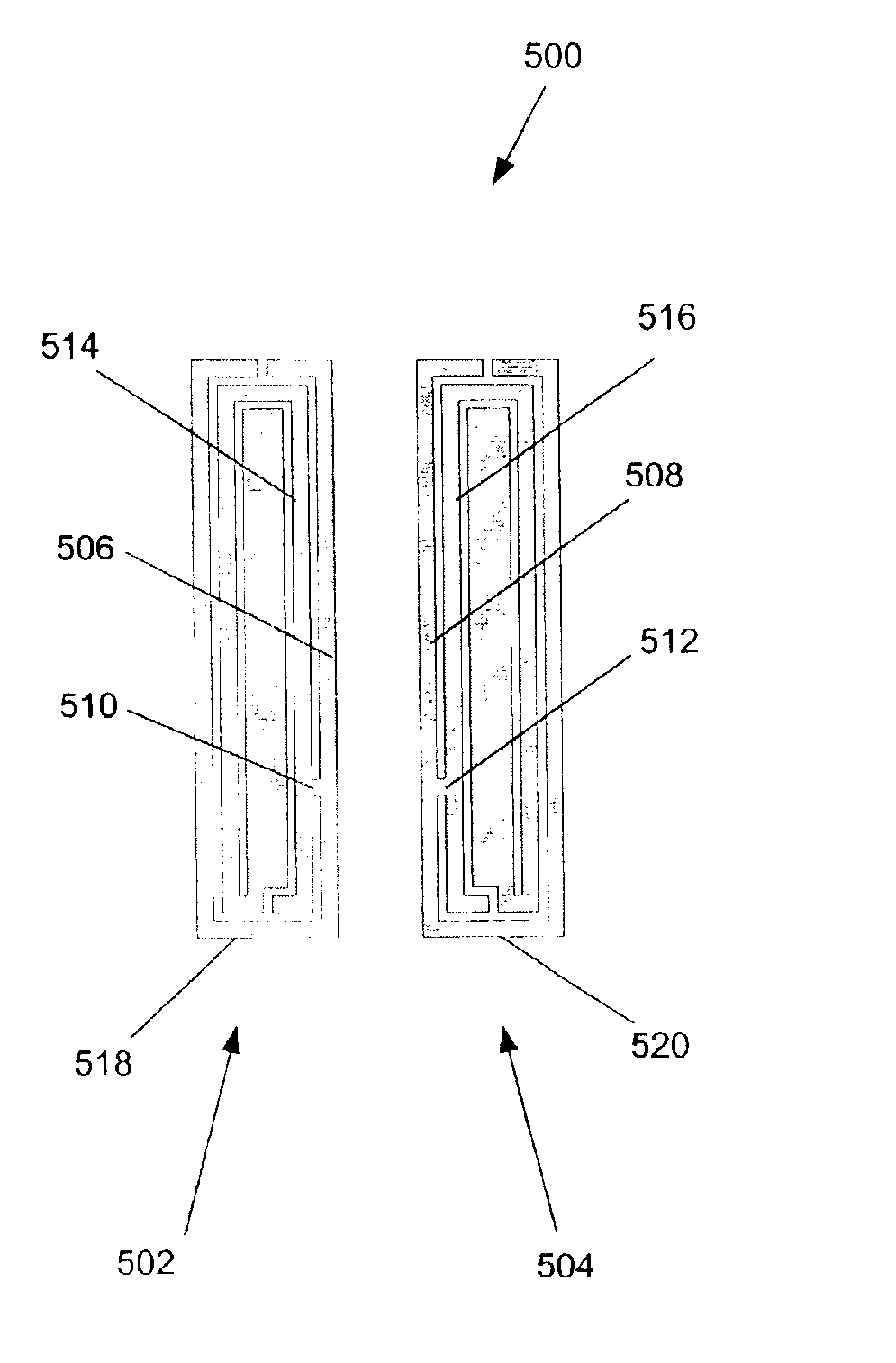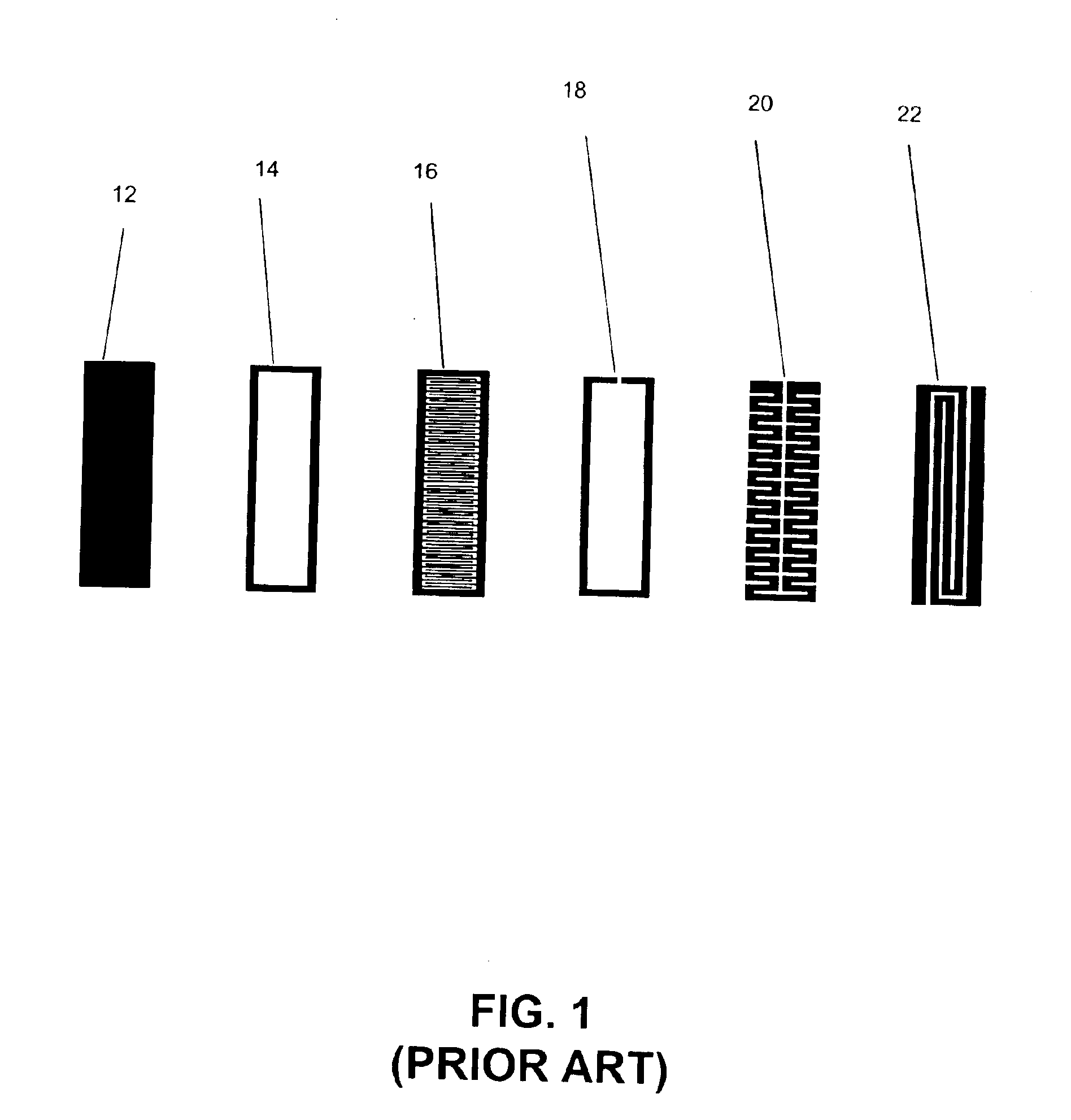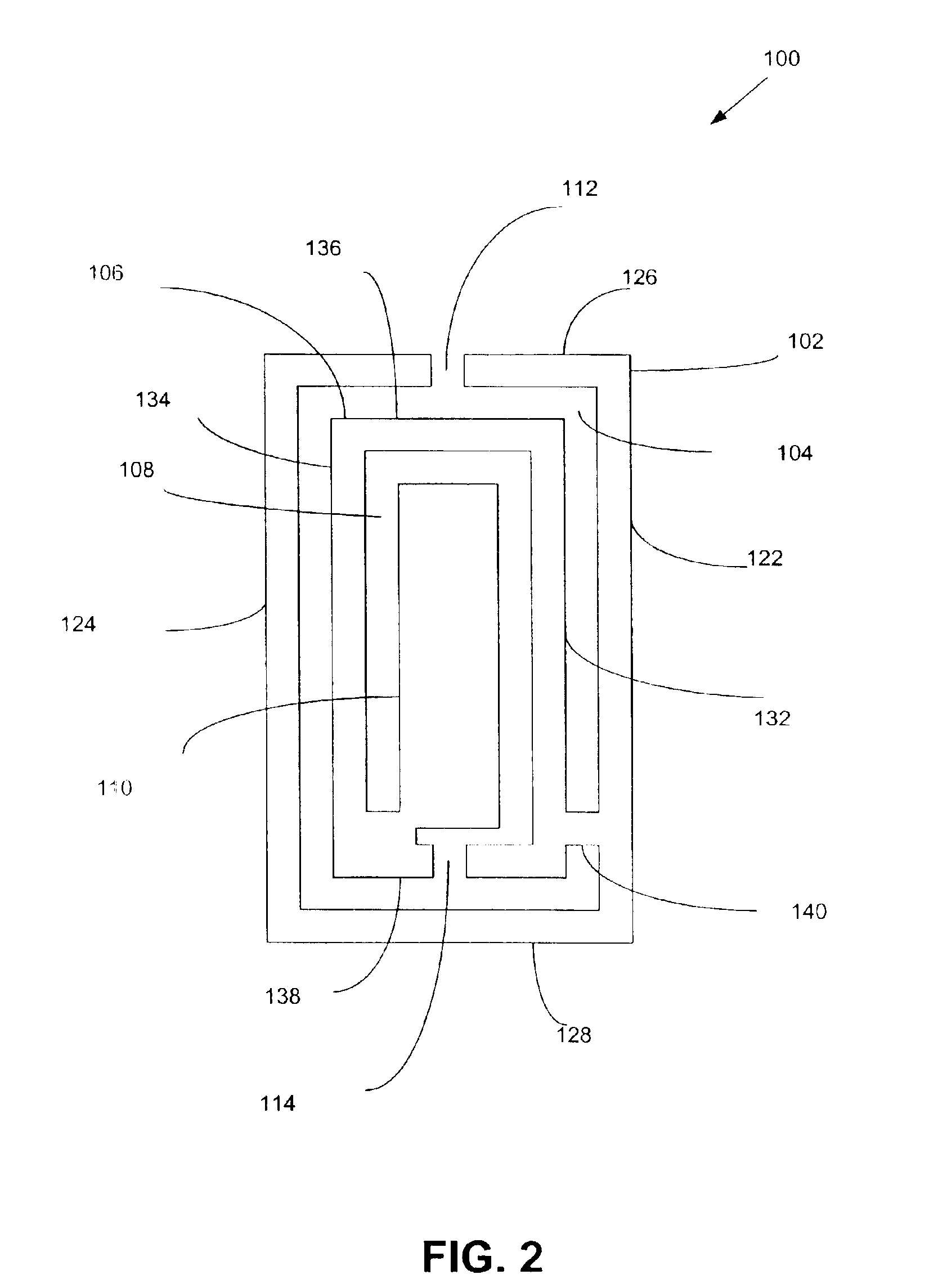Thin film resonators
a thin film, electromagnetic resonator technology, applied in the direction of resonators, superconductors/hyperconductors, electrical equipment, etc., can solve the problems of reducing and affecting the efficiency of resonators
- Summary
- Abstract
- Description
- Claims
- Application Information
AI Technical Summary
Problems solved by technology
Method used
Image
Examples
Embodiment Construction
[0026]As disclosed in detail hereinafter, a resonator is provided which integrates a microstrip resonator structure and a coplanar resonator structure. FIG. 2 illustrates an exemplary resonator 100 including a first outer loop 102, a first open slot 104, a first inner loop 106 and a second open slot 108. The first open slot 104 is located within the first outer loop 102. Similarly, the second open slot 108 is located within the first inner loop 106. The resonator 100 further includes a first rectangular strip 110 located within the second open slot 108.
[0027]The first outer loop 102 of the resonator 100 includes a first opening 112, while the first inner loop 106 of the resonator 100 includes a second opening 114. The first outer loop 102 and the first inner loop 106 of the resonator 100 illustrated in FIG. 2 may be fabricated from high temperature superconductive materials, such as YBa2Cu3O7-δ. However, in an alternate embodiment of the resonator 100, the first outer loop 102 and t...
PUM
| Property | Measurement | Unit |
|---|---|---|
| length | aaaaa | aaaaa |
| length | aaaaa | aaaaa |
| width | aaaaa | aaaaa |
Abstract
Description
Claims
Application Information
 Login to View More
Login to View More - R&D
- Intellectual Property
- Life Sciences
- Materials
- Tech Scout
- Unparalleled Data Quality
- Higher Quality Content
- 60% Fewer Hallucinations
Browse by: Latest US Patents, China's latest patents, Technical Efficacy Thesaurus, Application Domain, Technology Topic, Popular Technical Reports.
© 2025 PatSnap. All rights reserved.Legal|Privacy policy|Modern Slavery Act Transparency Statement|Sitemap|About US| Contact US: help@patsnap.com



